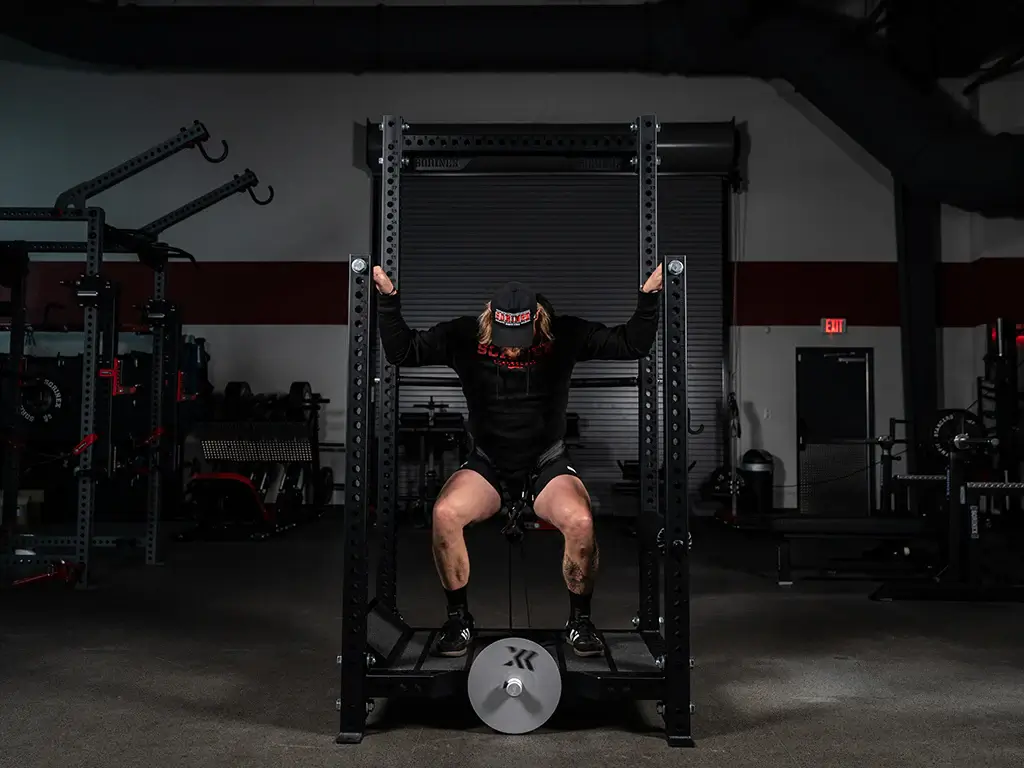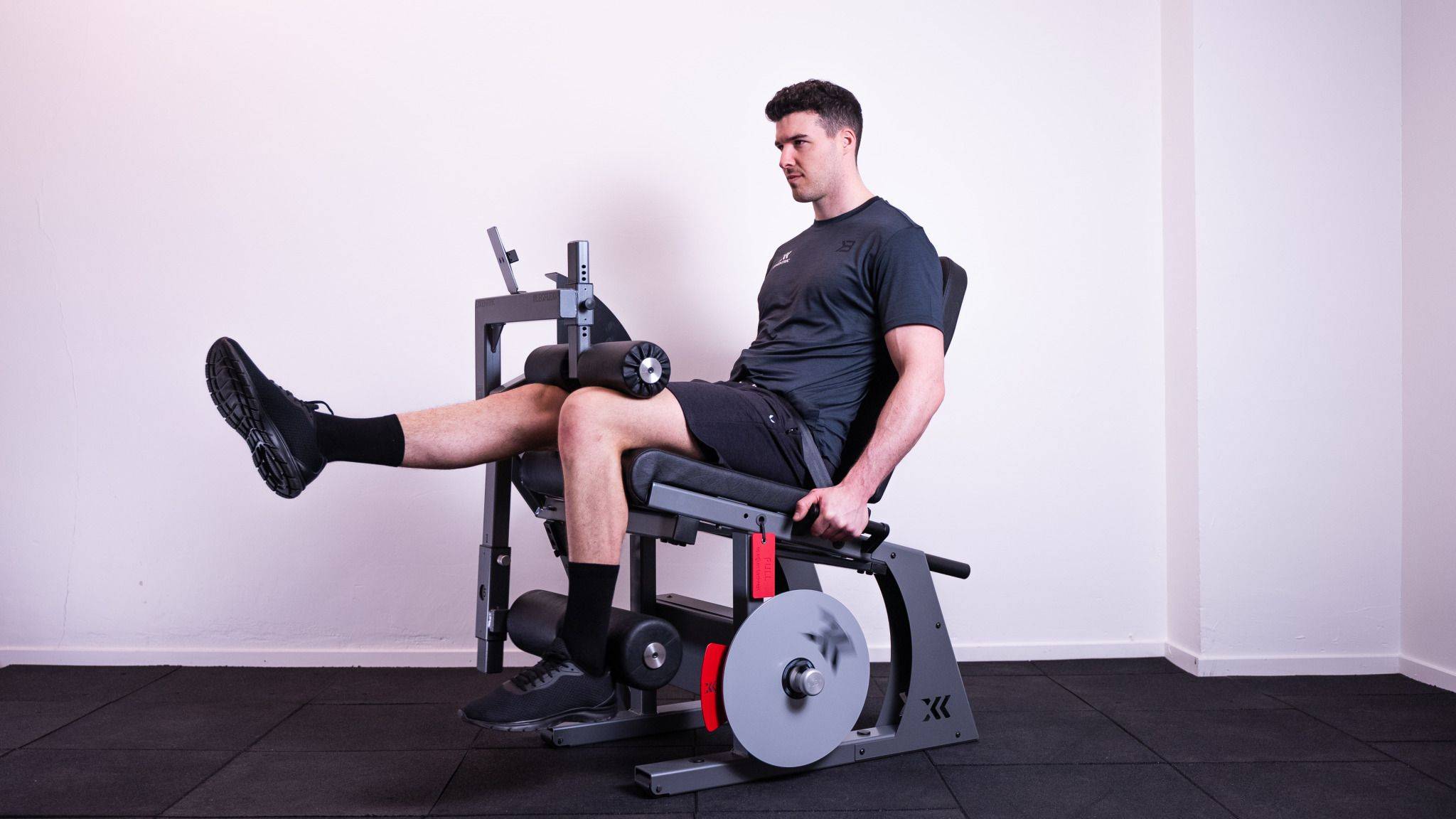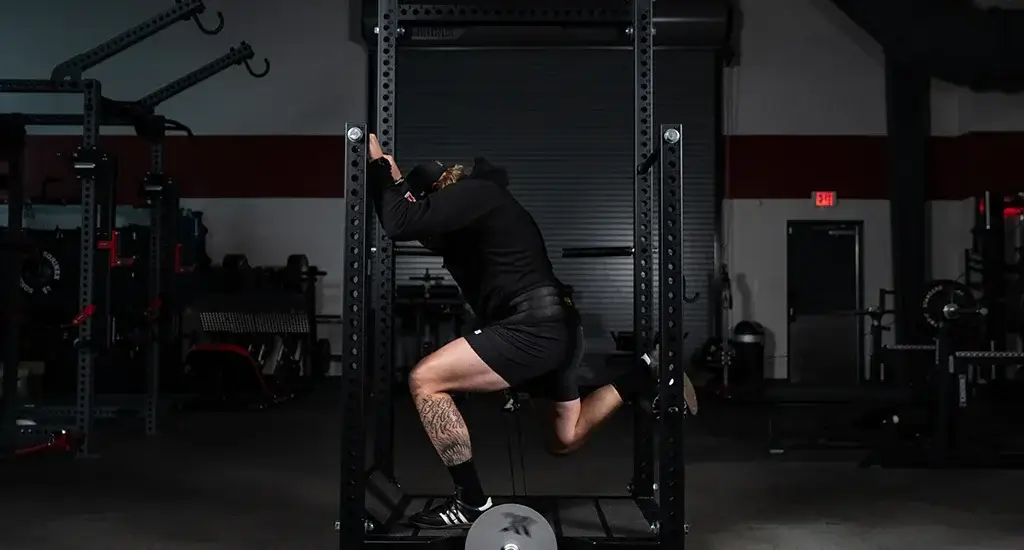At Exxentric, we’re always proud to support the advancement of scientifically-optimized training methodologies. In this blog post, Dr. Damian Harper, founder of Human Braking Performance shares an abridged version of a recent article delving into all the details of how flywheel training can boost eccentric strength and enhance horizontal deceleration—a crucial metric for athletes in multi-directional sports.
 The Eccentric Advantage in Braking
The Eccentric Advantage in Braking
Rapid deceleration is critical for athletes in multi-directional sports. Quickly reducing horizontal momentum depends on generating and attenuating high braking forces with potential for intense eccentric muscle actions—a key to performance and injury prevention.
When decelerating, the lower limbs must produce high internal joint extensor moments to control rapid joint flexion. Eccentric muscle actions, capable of generating much higher forces than concentric ones, are essential for absorbing braking energy. However, traditional resistance training often underloads this phase, whereas flywheel training demands high muscle activation during the eccentric (downward) phase with every repetition.
Flywheel Training: A Unique Stimulus
Flywheel devices—such as the kBox and kPulley—offer a superior method for targeting eccentric strength. During the concentric phase, the athlete builds inertia that must be powerfully decelerated in the eccentric phase. This overload isn’t possible with conventional training, making flywheel exercises effective for improving horizontal deceleration and change-of-direction (COD) performance, as supported by research with professional soccer players.
 Selecting and Programming Flywheel Exercises
Selecting and Programming Flywheel Exercises
Flywheel training’s versatility allows for eccentric braking force generation across vertical, horizontal, and rotational planes. Unilateral horizontal exercises can reduce inter-limb asymmetries, while single-joint exercises (e.g., knee extensions) target key braking muscles like the quadriceps and hamstrings. Flywheel exercises should be selected based on sport-specific deceleration demands. For example, shorter ground contact times and lower joint flexion ranges of motion are observed in early deceleration phase, versus longer ground contact times and greater joint ranges of motion in the late deceleration phase.
Programming Guidelines for Flywheel Eccentric Training
- Training Intensity:
- Inertial settings from 0.025 to 0.11 kg·m² target both braking force and braking power.
- Higher loads (> 0.05 kg·m²) favor strength adaptations; lower loads (0.025–0.05 kg·m²) favor power.
- Training Volume:
- 3 to 6 sets per session with 6 to 8 repetitions per set.
- Rest Intervals:
- Use >2 minutes for higher loads and <2 minutes for lower loads.
- Training Frequency & Duration:
- 2 to 3 sessions per week over 5 to 10 weeks.
- Note: Positive effects on COD have been seen with even one session per week.
- Periodization Considerations:
- Pre-season/Single Game Weeks: Two sessions—MD-4 (injury prevention and strength) and MD-2 (power).
- In-season:
- Starters: Two sessions per week.
- Non-starters: Up to three sessions with adjusted volume.
- Fixture Congestion: One session on MD-2, potentially using a micro-dosing strategy.
- Note: MD-4 = Four days pre-game, MD-2 = Two days pre-game, MD+2 = Two days post-game
 Key Take-Home Points
Key Take-Home Points
- Horizontal deceleration requires athletes to both generate and absorb high braking forces.
- Flywheel eccentric training enhances braking capabilities, directly improving horizontal deceleration and COD performance.
- Combining unilateral horizontal and vertical exercises ensures balanced, well-rounded braking strength.
- As sports demands evolve, focusing on flywheel training can help athletes tolerate repeated high braking forces thereby enhancing performance and reducing fatigue and injury-risk.
For more detailed insights, read the full article by Dr. Damian Harper here:
Developing Eccentric Braking Qualities to Enhance Horizontal Deceleration Ability





